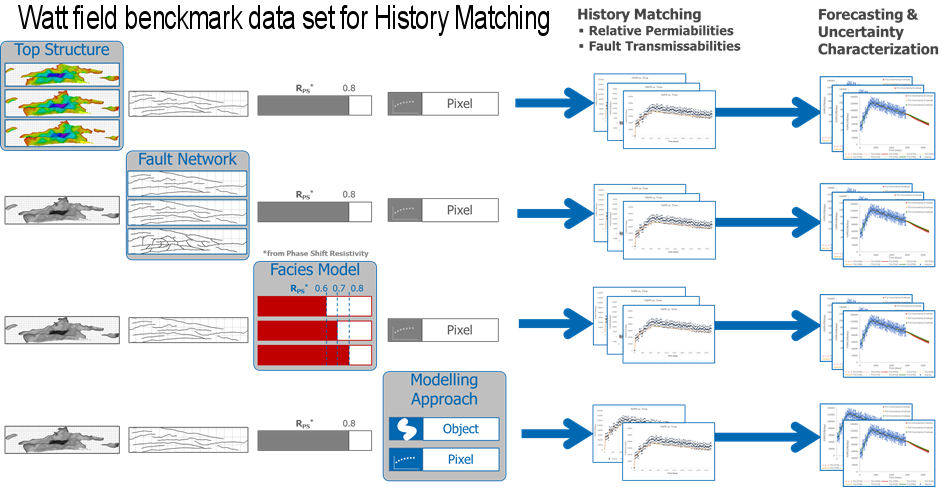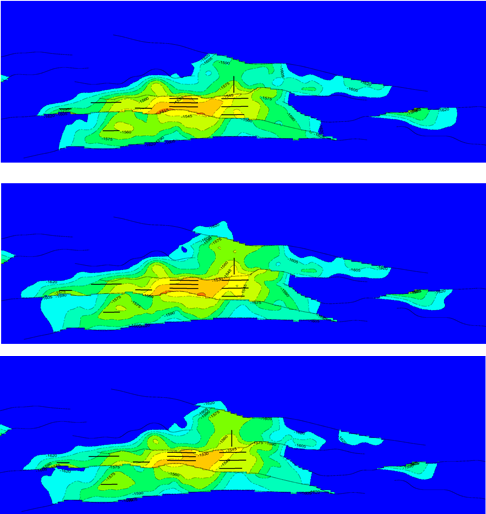There is a need for a case study that would consider interpretational uncertainty integrated throughout the reservoir modelling workflow. In this benchmark study we require the modeller to make interpretational choices as well as to select the techniques applied to the case study, namely the geomodelling approach, history matching algorithm and/or uncertainty quantification technique.
The interpretational choices covers the following:
- Top structure interpretation from seismic and well picks.
- Fault location, dimensions and the connectivity of the network uncertainty.
- Facies modelling approach.
- Facies interpretations from well logs cutoffs.
- Petrophysical property prediction from the available well data.
- Grid resolution-choice between number of iterations and model resolution to capture the reservoir features adequately.
A semi-synthetic study is based on real field data provided: production data, seismic sections to interpret the faults and top structures, wireline logs to identify facies correlations and saturation profile and porosity and permeability data and a host of other data. To make this problem useable in a manageable time period multiple hierarchically related gridded models were produced for a range of different interpretational choices.

Highlights
- We made a case study which requires the inclusion of interpretational uncertainties.
- Solution space described by 81 different available realisations.
- The model is not one of the provided scenarios.
- We have tried to match the reservoir using 2 simple approaches with some success.
- Challenge to match and will require approaches that look at all the solution space.
Reference: Hierarchical benchmark case study for history matching, uncertainty quantification and reservoir characterisation, by D.Arnold, V.Demyanov, D.Tatum, M.Christie, T.Rojas, S.Geiger, P.Corbett, Computers & Geosciences 50:4-15


